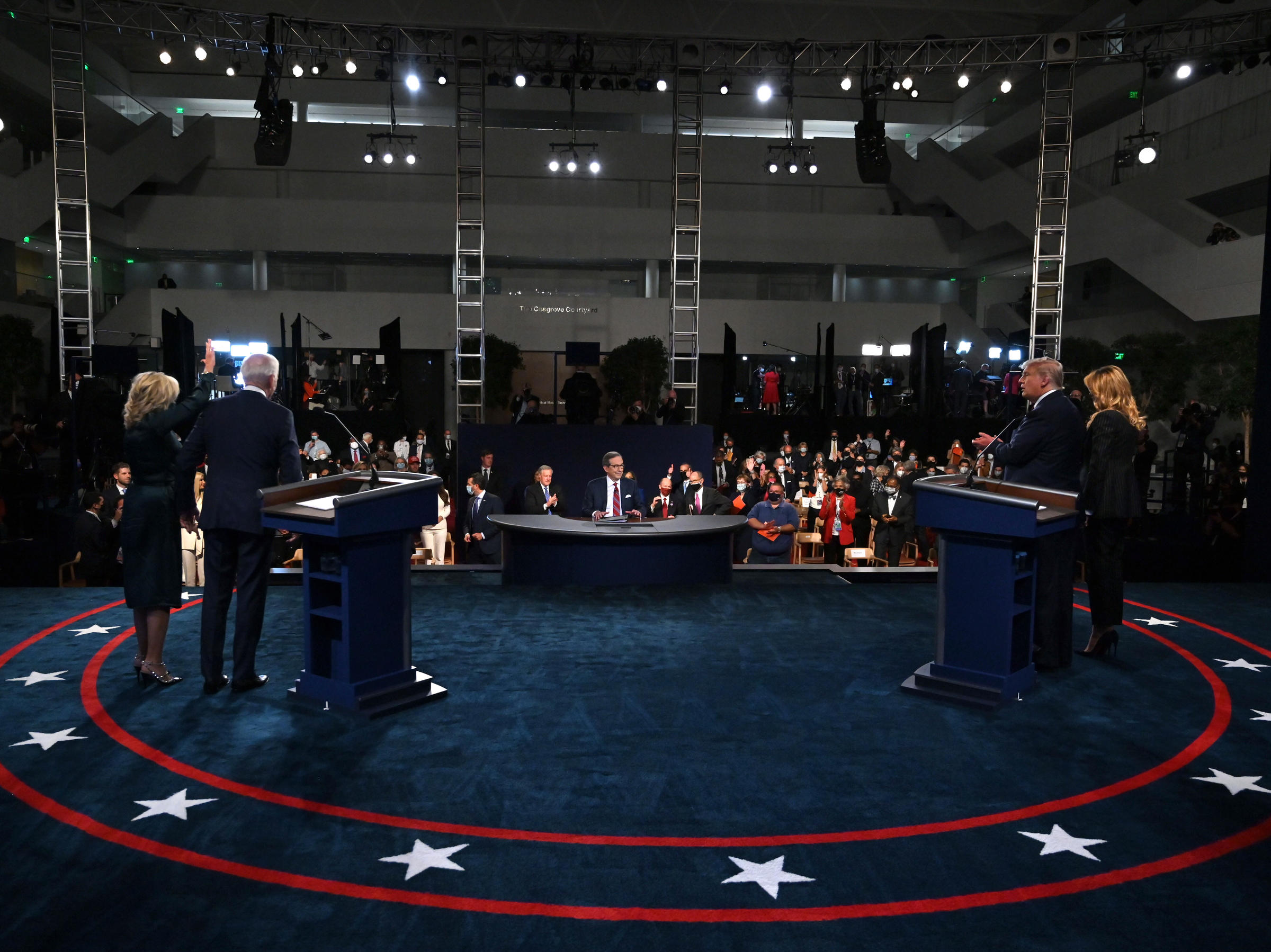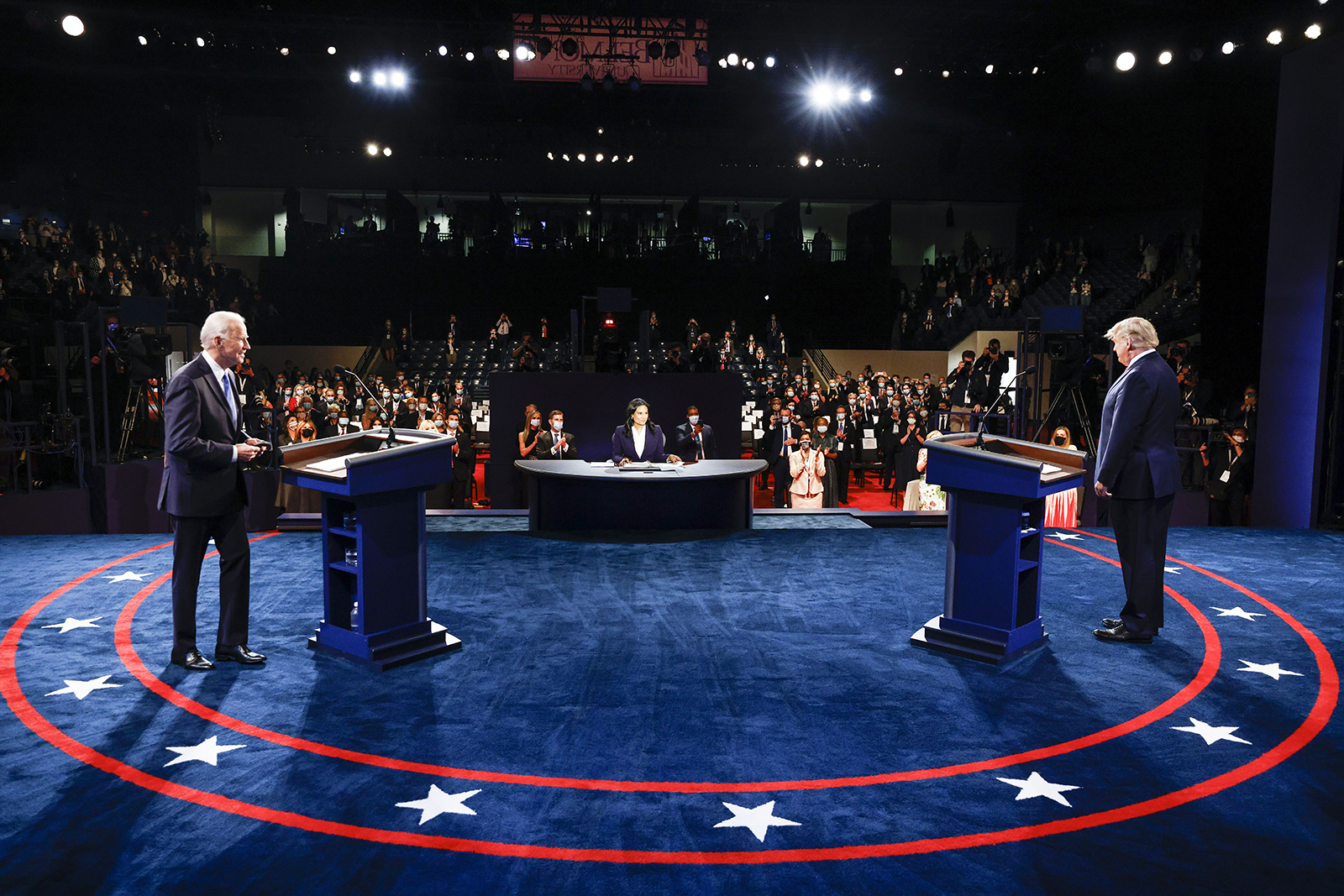Presidential Debate Performance Analysis

Presidential debate thursday – The highly anticipated presidential debate provided a platform for the candidates to present their visions and policies, engage in direct exchanges, and demonstrate their leadership qualities. A comprehensive analysis of their performance reveals their strengths, weaknesses, and the impact of key moments on the overall debate.
The presidential debate on Thursday was a riveting spectacle, with candidates vying for the nation’s highest office. As the debate heated up, a tangential discussion emerged about the upcoming WNBA playoff matchup between the Indiana Fever and the Chicago Sky.
These two teams have a storied rivalry, and their upcoming clash is sure to be a thrilling affair. The Indiana Fever, with their veteran leadership and tenacious defense, will face off against the Chicago Sky, who boast a dynamic offense and a formidable bench.
Both teams will be eager to prove their mettle and advance to the next round of the playoffs. As the presidential debate concluded, the anticipation for the Indiana Fever vs. Chicago Sky game reached fever pitch, leaving viewers eagerly awaiting both the outcome of the election and the thrilling basketball showdown.
The candidates exhibited distinct body language, tone, and delivery styles that influenced their effectiveness. Some appeared confident and composed, while others displayed nervousness or aggression. Their tone ranged from assertive to conciliatory, and their delivery varied from clear and concise to rambling or evasive.
Amidst the heated debates of Thursday’s presidential debate, a different kind of rivalry took place on the basketball court. The Indiana Fever and Chicago Sky faced off in a thrilling match, showcasing impressive player stats. For those eager to delve into the details, a comprehensive analysis awaits at indiana fever vs chicago sky match player stats.
As the debate’s intensity subsided, the spotlight returned to the political arena, where the candidates continued their quest for the nation’s highest office.
Body Language and Nonverbal Cues
- Candidate A maintained an upright posture and made direct eye contact, conveying confidence and authority.
- Candidate B fidgeted and avoided eye contact, giving the impression of discomfort or unease.
- Candidate C used hand gestures and facial expressions effectively to emphasize their points and engage the audience.
Tone and Delivery
- Candidate A spoke in a clear and articulate voice, using a persuasive and engaging tone.
- Candidate B often interrupted and spoke over their opponents, appearing aggressive and disrespectful.
- Candidate C delivered their responses with a calm and measured tone, projecting an image of composure and control.
Key Moments and Impact
The debate featured several key moments that significantly influenced the candidates’ performances.
The presidential debate on Thursday is a crucial event in the upcoming election. However, for those interested in a thrilling sports match, the Indiana Fever vs Sky game is a must-watch. The Fever, led by their star player Tamika Catchings, will face off against the Sky, who have been dominant in the WNBA this season.
While the presidential debate will undoubtedly be filled with political intrigue, the Indiana Fever vs Sky game promises an exciting display of athleticism and skill. So, whether you’re a political junkie or a sports enthusiast, Thursday has something for everyone.
- Candidate A’s passionate defense of their healthcare policy resonated with the audience, boosting their credibility.
- Candidate B’s gaffe on foreign policy raised concerns about their competence and judgment.
- Candidate C’s skillful handling of a personal attack deflected the criticism and strengthened their image as a resilient leader.
Key Issues and Policy Proposals: Presidential Debate Thursday

The debate focused on a range of key issues, including the economy, healthcare, climate change, and social justice. The candidates presented contrasting policy proposals on each of these issues, highlighting their different visions for the country’s future.
One of the most significant areas of disagreement between the candidates was on the issue of healthcare. Candidate A proposed a single-payer system that would provide universal healthcare coverage, while Candidate B advocated for a market-based approach that would allow individuals to purchase private insurance. The candidates also differed on their approaches to climate change, with Candidate A calling for aggressive action to reduce carbon emissions and Candidate B supporting a more gradual approach.
Economic Policies
The candidates’ economic policies also differed significantly. Candidate A proposed raising taxes on corporations and wealthy individuals to fund social programs, while Candidate B advocated for tax cuts and deregulation to stimulate economic growth. The candidates also had different views on trade, with Candidate A supporting free trade agreements and Candidate B calling for a more protectionist approach.
Social Justice
The candidates also discussed issues related to social justice, including racial inequality, LGBTQ+ rights, and gun control. Candidate A proposed a number of policies aimed at addressing racial disparities, including increased funding for education and job training programs. Candidate B, on the other hand, emphasized the importance of law enforcement and a strong military to maintain social order.
The candidates’ policy proposals reflect their different perspectives on the role of government. Candidate A believes that the government has a responsibility to provide essential services and address social problems, while Candidate B argues that the government should play a more limited role in people’s lives.
Public Perception and Media Coverage

The public’s reaction to the presidential debate was largely divided along partisan lines, with Democrats and Republicans expressing starkly different views on the performances of their respective candidates. According to a post-debate poll conducted by CNN, 62% of Democrats believed that their candidate had won the debate, while only 38% of Republicans felt the same way about their candidate.
The media coverage of the debate was also heavily influenced by partisan bias. Conservative media outlets tended to portray the Republican candidate as the clear winner, while liberal media outlets generally favored the Democratic candidate. This partisan divide in media coverage is likely to have reinforced the existing partisan divide in public opinion.
Key Themes and Narratives, Presidential debate thursday
Several key themes and narratives emerged from the debate, including the candidates’ positions on the economy, healthcare, and immigration. The Republican candidate focused on tax cuts and deregulation as the key to economic growth, while the Democratic candidate emphasized the need for government investment in infrastructure and education. On healthcare, the Republican candidate pledged to repeal and replace the Affordable Care Act, while the Democratic candidate promised to protect and expand access to healthcare. On immigration, the Republican candidate called for increased border security and a reduction in legal immigration, while the Democratic candidate advocated for a path to citizenship for undocumented immigrants.
These key themes and narratives had a significant impact on public opinion. The Republican candidate’s focus on tax cuts and deregulation appealed to many voters who were concerned about the economy. The Democratic candidate’s emphasis on government investment in infrastructure and education resonated with voters who were concerned about the future of the country. The Republican candidate’s hardline stance on immigration appealed to voters who were concerned about illegal immigration. The Democratic candidate’s more moderate stance on immigration appealed to voters who were concerned about the humanitarian impact of deportation.
Role of Social Media
Social media played a significant role in shaping the public’s perception of the debate. In the days leading up to the debate, both candidates used social media to promote their own positions and attack their opponents. During the debate, many voters used social media to comment on the candidates’ performances in real time. In the aftermath of the debate, social media was used to spread both positive and negative coverage of the candidates.
The use of social media during the debate had a number of important implications. First, it allowed voters to engage with the debate in a more interactive way. Second, it allowed voters to share their own thoughts and opinions on the debate with others. Third, it allowed voters to be exposed to a wider range of perspectives on the debate.
Overall, the public’s reaction to the presidential debate was largely divided along partisan lines. The media coverage of the debate was also heavily influenced by partisan bias. Several key themes and narratives emerged from the debate, including the candidates’ positions on the economy, healthcare, and immigration. These key themes and narratives had a significant impact on public opinion. Social media played a significant role in shaping the public’s perception of the debate.
As the clock ticked down on the presidential debate Thursday, the air crackled with anticipation. Yet, amidst the political fervor, the sporting world offered a compelling distraction. For basketball enthusiasts, the Indiana Fever vs Chicago Sky match showcased an electrifying battle of skill and strategy.
The players’ stats, available at indiana fever vs chicago sky match player stats , painted a vivid picture of the game’s intensity. As the debate concluded, the sporting rivalry served as a reminder that even in the most divisive of times, the pursuit of excellence and the thrill of competition can unite us.
The presidential debate Thursday promises to be a heated affair, with both candidates vying to sway undecided voters. While the debate will undoubtedly focus on the issues facing the nation, it’s also likely to touch on more personal topics, such as the candidates’ beliefs and values.
In this regard, it will be interesting to see how the candidates handle questions about their faith. For example, will they discuss their personal experiences with religion? Or will they focus on the role of religion in public life? Whatever their approach, the candidates’ answers to these questions could provide valuable insights into their character and their vision for the country.
Mystics vs Fever is a novel that explores the complex relationship between faith and politics. The book follows the story of two young women who are drawn to different religious traditions. As they navigate the challenges of their faith, they must also come to terms with the political realities of their time.
The novel offers a timely reminder that faith and politics are often intertwined, and that the choices we make in both realms can have a profound impact on our lives.